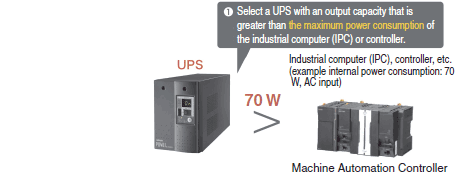Uninterruptible Power Supply(UPS)
| Introduction | Features |
| Principles | Classifications |
| Engineering Data |
|
|
|
|
What Is a Uninterruptible Power Supply (UPS)?
A UPS, or a uninterruptible power supply, is a device used to backup a power supply to prevent devices and systems from power supply problems, such as a power failure or lightning strikes. A UPS can help prevent power supply problems that can often occur on a production site, such as an instantaneous voltage drop and a power failure.
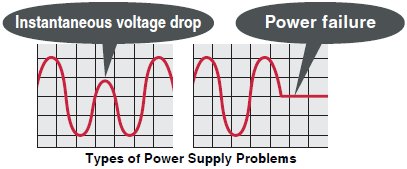
Function
If power supply to devices stops because of an instantaneous voltage drop or a power failure, devices such as PCs or registers shut down abnormally, which can damage hard disks and corrupt the data. A UPS can supply power to devices from a built-in battery for a given period of time during an instantaneous voltage drop or a power failure to protect devices and important data.
Classifications
There are two major classifications of UPSs: DC input/DC output models and AC input/AC output models. Select the optimum UPS for your needs based on the type of power supply, load capacity, and other specifications of the equipment and devices that you want to backup. You can also use a UPS together with a switch mode power supply to further increase your options.

A DC-DC UPS is the optimum option for backing up devices with a DC input power supply.
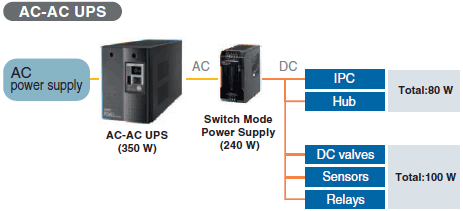
An AC-AC UPS is the optimum option for backing up devices with an AC input power supply.
Mechanism
During normal operation, the input power supply bypasses the UPS and is output as-is. During backup operation when a power failure or an instantaneous voltage drop has occurred, the UPS changes to inverter operation with power supplied from its internal battery.
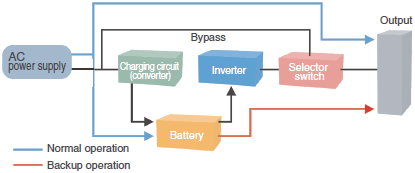
Selection Method
Check the power consumption (W) of the device that will be backed up by the UPS, and select a UPS that has an output capacity greater than that amount.
DC-DC Selection Example
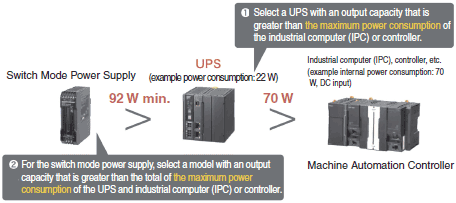
AC-AC Selection Example
